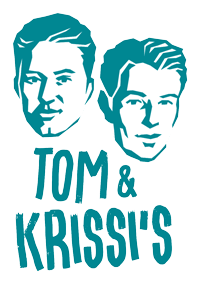Histamine intolerance
Histamine Intolerance – Histamine Sensitivity
With histamine intolerance, also known as histaminosis, the body reacts to the intake of large amounts of histamine with various intolerance reactions. Why this intolerance and its symptoms occur is not yet fully understood scientifically. However, only about 1% of the population suffer from this intolerance, with the majority being women in middle age.
What is Histamine?
Histamine belongs to the biogenic amines and serves various functions in the body as a biological messenger. For example, it stimulates gastric acid secretion, dilates blood vessels, thereby lowering blood pressure. At the same time, histamine regulates the sleep-wake cycle or appetite control. Furthermore, it is involved in the regulation of allergic reactions and associated inflammatory processes.
Causes of Histamine Intolerance
The specific causes of histamine intolerance have not yet been definitively determined. It is uncertain whether histamine from food alone is responsible for the development of intolerance reactions.
Symptoms
Individuals suffering from histamine intolerance often react to an overdose of histamine shortly after consumption with:
- Facial flushing
- Hives
- Swelling of the nasal mucosa
- Headaches
- Itching
These symptoms usually occur within the first half hour after consuming foods such as red wine, cheese, tuna, cured sausages, or sauerkraut.
Additional symptoms like
- Abdominal cramps
- Diarrhea
may occur several hours after consumption.
Diagnosis
Currently, there is no suitable diagnostic procedure to definitively identify histamine intolerance. Furthermore, the multitude of symptoms, often hastily self-diagnosed as histamine intolerance due to the popularity of this condition, complicates a clear diagnosis.
To properly identify histamine intolerance, other potential conditions must first be systematically ruled out. For this purpose, a medical history taken by a specialist is advisable.
Diet for Histamine Intolerance
The goal after diagnosing histamine intolerance is a diet that leads to relief from symptoms. However, completely avoiding all histamine-containing foods is the wrong approach because the tolerance of histamine-containing foods depends on various factors, and premature avoidance of certain foods poses the risk of malnutrition. In addition to the actual histamine content, it also depends on individual dietary habits, the combination of different foods, and individual factors such as stress, medication use, or hormonal changes.
During an initial 14-day period of avoidance, under the guidance and supervision of a specialist or nutritionist, a predominantly vegetable-based diet with reduced intake of histamine-containing foods should be followed to reduce symptoms. Subsequently, in a subsequent testing phase, it should be tested which foods are well or poorly tolerated in what quantities. Long-term, the goal is to achieve a diet with as little restriction as possible that restores a certain quality of life in terms of nutrition.
Histamine-Rich Foods
Histamine is mainly found in foods that undergo a ripening and fermentation process. Additionally, the histamine content varies depending on storage conditions, processing methods, and ripening processes. For this reason, for example, two wines of the same variety and vintage never have exactly the same histamine content. Generally, histamine accumulates the longer a food is stored, so fresh foods should be consumed whenever possible.
Foods high in histamine or a histamine liberator:
- Alcoholic beverages - especially red wine
- Black and green tea, coffee
- Cheese - especially hard cheese
- Chocolate and cocoa-containing foods
- Salami, cured sausages, cured ham
- Smoked fish, seafood
- Offal
- Pickles
- Tomatoes, sauerkraut, spinach, avocado, eggplant
- Mushrooms (e.g., porcini, mushrooms)
- Citrus fruits, kiwis, strawberries, raspberries, pineapple, papaya, plum, pear, grapes, bananas
- Walnuts, peanuts, wheat germ, legumes
Excursion: Histamine Liberators
Some foods do not contain histamine but are capable of releasing histamine in the body (= liberate). These foods are called histamine liberators and can cause symptoms in individuals suffering from histamine intolerance.
Low-Histamine Foods
- Butter, pasteurized milk, crème fraîche, cottage cheese, cream
- Unripened cheese (mozzarella, young Gouda)
- Fresh eggs
- Broccoli, kale, red and white cabbage
- Fresh cucumber, pumpkin, zucchini
- Potatoes, bell peppers, asparagus
- Fennel, carrots, parsnips, radishes, beets
- Rhubarb
- Apple, blueberry, currant, blackberry, gooseberry, cranberry, grape
- Persimmon, lychee, melons
- Dates, cherries, mango, apricot, peach
- Grains and baked goods (made from corn, rice, millet, wheat, oats, spelt)
- Coconuts
- Hazelnuts (to some extent), almonds, macadamia nuts, pistachios, Brazil nuts
- Flaxseeds, sesame seeds, pumpkin seeds
- Fresh meat (not marinated)
- Freshly caught fish
- Cooked ham, sausage


